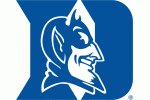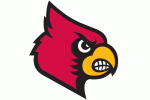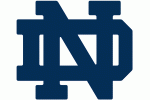The transfer portal has changed college football. No longer is player movement rare. In today’s game, it’s expected. And for ACC programs, this shift has become an opportunity, not just to patch holes, but to evolve. At 22Bet, you can now bet on who will be the next transfer, and even when it will happen.
/cdn.vox-cdn.com/uploads/chorus_image/image/73037392/usa_today_22020762.0.jpg)
Not Just Plug-and-Play
It’s easy to assume transfers are just quick fixes. Need a linebacker? Grab one. Lost your QB? Find another. But ACC schools are going deeper. They’re looking for players who’ve been tested on and off the field. Coaches want experience. Players who know how to prepare. Guys who’ve seen big crowds, tough losses, and still show up ready.
Leadership Matters in the Locker Room
A senior transfer can do more than play. He can lead. Some coaches in the ACC are using transfers to set the tone. A good example? Look at NC State’s recent defensive pickups. They brought in players who have started dozens of games elsewhere. These aren't just athletes, they’re mentors. Younger players see their habits and follow.
Depth Wins Games in November
Injuries happen. Fatigue sets in. The teams that survive late-season battles are the ones with depth. The transfer portal lets ACC coaches build out second and third units without relying only on freshmen. At Virginia Tech, for instance, transfers have shored up both sides of the line. They may not start every week, but they’re ready when it counts.
The Portal as a Culture Reset Button
Some programs need more than just talent; they need a new attitude. Transfers can bring that. When a coach steps into a struggling team, he often uses the portal to bring in players who match his mindset. These players act like extensions of the coaching staff. At Georgia Tech, several transfers were picked not just for skills, but for their grit and team-first mindset.
Case Study: North Carolina’s Targeted Portal Approach
UNC hasn’t just gone after the best players available. They’ve gone after the right ones. Their staff evaluates who fits their system and who can mentor. In recent years, they’ve added experienced receivers and safeties who not only filled gaps but helped elevate the practice intensity. That’s how you use the portal with intention.
Quarterbacks: The High-Stakes Gamble
Quarterback is the most watched position in the portal. One great transfer can change everything. One miss can set a program back. Pitt took that gamble with Kedon Slovis in 2022. Louisville has made similar moves. In the ACC, coaches are using the portal to avoid long rebuilds. It’s risky, but sometimes it pays off in a big way.
From Backup to Breakout
Some transfers were stuck behind a star at their old school. In the ACC, they finally get a shot. Clemson’s rivals have benefited from this. Wake Forest, Boston College, and Duke have taken chances on second-stringers who just needed the field. These players come hungry. They’re ready to prove something. And often, they do.
It’s Also About Retention
The portal goes both ways. ACC programs also need to keep players from leaving. One smart strategy? Bring in older players who raise the internal competition. This makes younger talent better and keeps them engaged. Florida State’s success here stands out. They’ve balanced incoming transfers with strong retention, keeping their core while adding strength.
How Coaches Adjust Their Recruiting
The portal changes how staffs recruit. High school recruiting is still vital, but now there’s a second layer. Many ACC coaches now hold a few scholarships open, knowing someone valuable might hit the portal after spring ball. It's chess, not checkers. Timing is everything. A player who didn’t start at Texas might be a perfect fit at Syracuse.
The Analytics Behind Portal Picks
This isn’t guesswork. Schools are using data to track portal players. Snap counts, coverage stats, even leadership grades—these metrics help coaches target smarter. Programs like Miami and Virginia are investing in staff who specialize in this. It’s not just about who’s available, it’s about who fits.
Balancing Short-Term Wins With Long-Term Growth
Some worry the portal will hurt development. Why groom a redshirt freshman if a starter is one click away? But smart programs find balance. They use the portal to fill gaps but still develop youth. Clemson, for example, has been slow to dive in, but when they do, it's strategic. They don’t chase. They choose.
Challenges That Come With Transfers
Transfers bring upside, but also risk. They have limited time to adapt. They may come with baggage. They might not mesh. Some schools in the ACC have had to cut ties quickly. It’s a learning curve. Coaches need to blend personalities fast. Team chemistry matters just as much as talent.
Building for the Present Without Breaking the Future
The best ACC transfer strategies aim to win now, but not only now. Schools are mixing veterans with freshmen to ensure a strong core sticks around. By layering talent year over year, they stay competitive without constantly starting over.



















